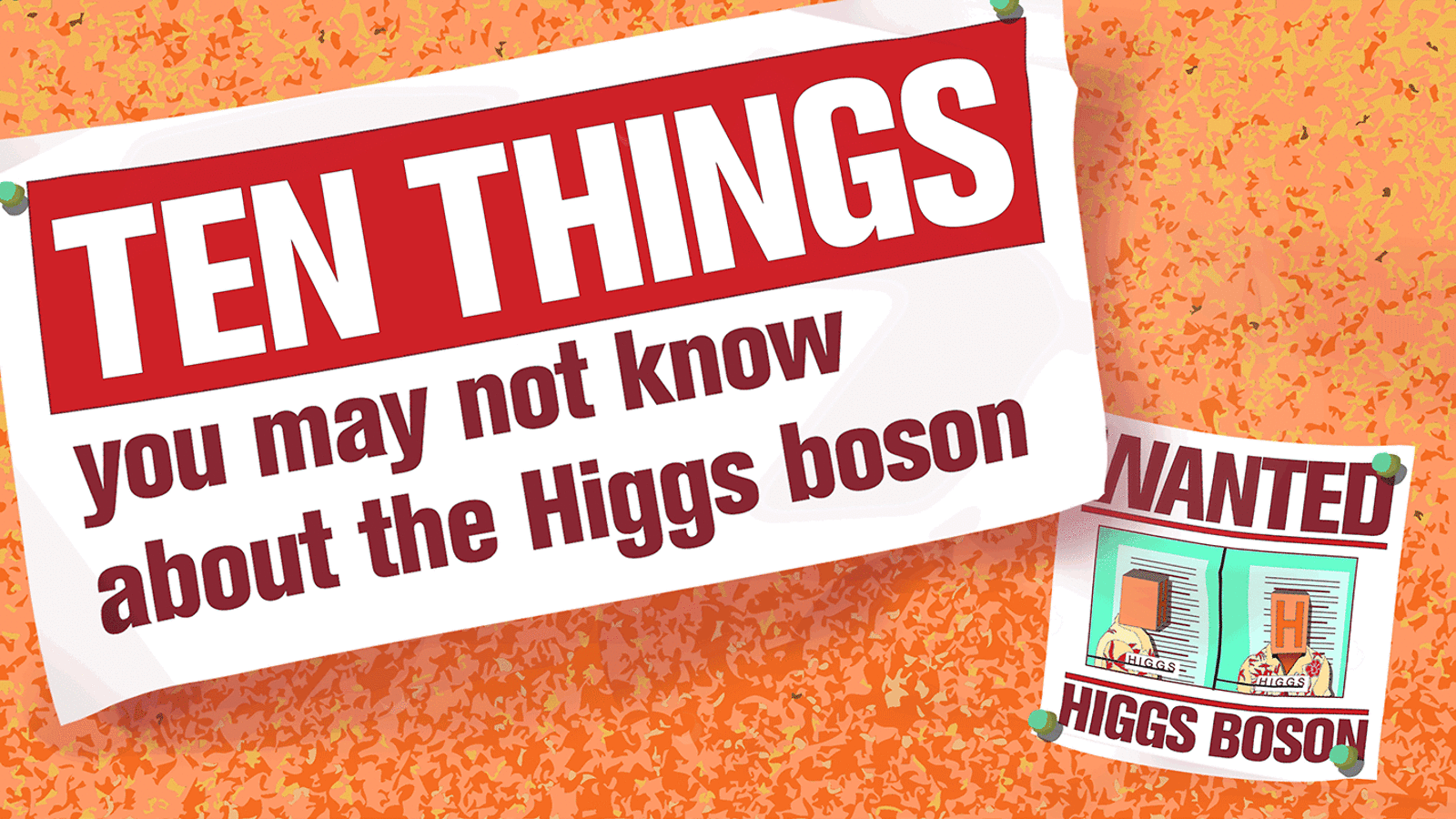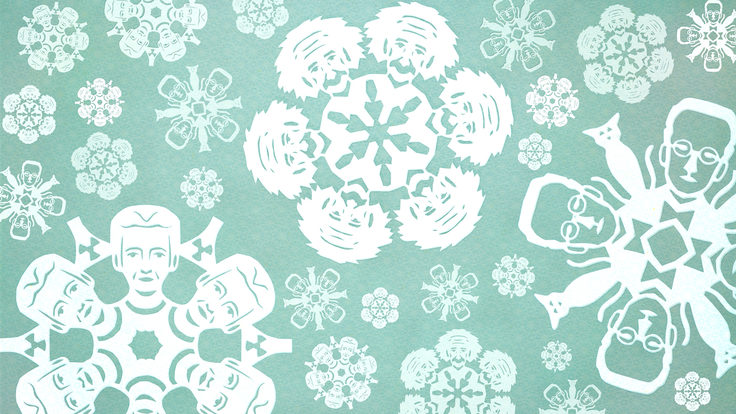
1. Peter Higgs’ best-known paper on the new particle was initially rejected.
But this was a blessing in disguise, since it led Higgs to add a paragraph introducing the now-famous Higgs particle. In 1964, Higgs wrote two papers, each just two pages long, on what is now known as the Higgs field. The journal Physics Letters accepted the first but sent the second back. Yoichiro Nambu, a highly regarded physicist who had reviewed the second paper, suggested Higgs add a section explaining his theory's physical implications. Higgs added a paragraph predicting that an excitation of the field, like a wave in the ocean, would yield a new particle. He then submitted the revised paper to the competing journal Physical Review Letters, which published it.
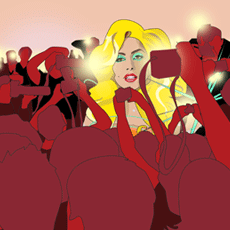
2. The science minister for the United Kingdom once held a national competition to find the best Higgs explanation.
According to the Higgs model, elementary particles gain mass by interacting with an invisible, omnipresent field. The more a particle interacts with the Higgs field, the more mass it will have. Scientists had such difficulty explaining the Higgs field to the British government that in 1993, UK Science Minister William Waldegrave challenged them to send him their best one-page descriptions. Waldegrave handed out champagne to the winners, who included physicist David Miller of University College London. Miller compared the Higgs field to a crowd of political party workers spread evenly through a room. An anonymous person could move through the crowd unhindered. However, then Prime Minister Margaret Thatcher would attract a lot of attention: Party workers would clump around her, slowing her down, giving her metaphorical "mass." Creative types have since swapped the characters in the metaphor for Albert Einstein mobbed by fellow scientists or pop stars swarmed by paparazzi.

3. The Higgs mechanism explains only a small fraction of the mass in the universe.
Most popular science articles give the Higgs model broad credit for lending mass to everything in the universe. However, the Higgs field gives mass only to elementary particles such as quarks and electrons. Most of the visible universe is made of composite particles such as protons and neutrons, which contain quarks. Just as a loaf of raisin bread weighs more than the sum of its raisins, protons and neutrons get their mass from more than just the quarks inside them. The strong nuclear force that holds those quarks together does most of the mass-giving work.
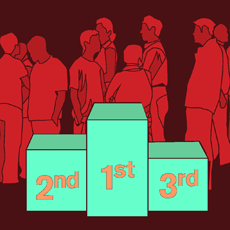
4. Higgs was not the only physicist who contributed to the idea of how to give particles mass.
At least a dozen theorists played some part in developing the theoretical framework that led to the Higgs particle. In 2010, the American Physical Society awarded the J.J. Sakurai Prize to six physicists who had published papers on the topic in 1964. But other theorists came up with similar ideas, and earlier publications helped pave the way. The size of this crowd may trouble a certain Swedish committee, as the annual Nobel Prize for physics can be awarded to three living scientists at most.
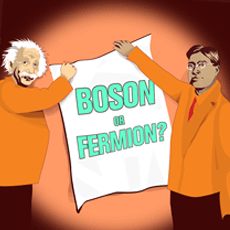
5. The term “boson” comes from the name of Indian physicist and mathematician Satyendra Nath Bose.
Particles come in two varieties: bosons and fermions. The Higgs particle falls into the category of bosons, named for a physicist best known for his collaborations in the 1920s with Albert Einstein. Some of the pair's work resulted in the invention of Bose-Einstein statistics, a way to describe the behavior of a class of particles that now shares Bose's name. Two bosons with identical properties can be in the same place at the same time, but two fermions cannot. This is why photons, which are bosons, can travel together in concentrated laser beams. But electrons, which are fermions, must stay away from each other, which explains why electrons must reside in separate orbits in atoms. Bose never received a doctorate, nor was he awarded a Nobel Prize for his work, though the Nobel committee recognized other scientists for research related to the concepts he developed.

6. The nickname “God particle” originated from a book by Nobel laureate Leon Lederman.
Physicist Leon Lederman unwittingly gave the Higgs boson what may be its most-disliked descriptor with the title of his book, The God Particle. Lederman likes to joke that he actually wanted to call the Higgs boson the "goddamn particle" because it's so darned difficult to find. The nickname makes for attention-grabbing headlines, but it also makes most particle physicists cringe.

7. Standard particle theory will be incomplete even if the Higgs particle is discovered.
The Higgs boson is the last undiscovered particle predicted by the Standard Model, a beautiful mathematical framework physicists use to describe the smallest bits of matter and how they interact. Experimental results have time and again validated the model's other predictions. But finding the Higgs boson would not close the book on particle physics. While the Standard Model accounts for fundamental forces such as electromagnetism and the strong nuclear force, it cannot make sense of gravity, which is disproportionately weak compared to the other forces. One possible explanation is that we experience only a fraction of the force of gravity because most of it acts in hidden extra dimensions.

8. If the Higgs particle exists, it may have relatives.
Many theorists have tried to explain the known particles and their masses without a Higgs boson, but no one has yet come up with a successful model. In fact, a popular theory known as supersymmetry predicts at least five Higgs particles, and others predict many more. It is up to experiments at the Large Hadron Collider in Europe and at the Tevatron collider in the United States where experiments have concluded, but data are still being analyzed to discover whether the Higgs boson exists and, if so, whether it is the particle we expected.
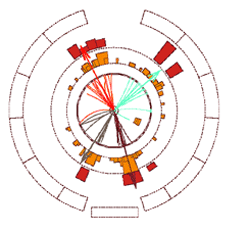
9. Scientists may have first glimpsed the Higgs boson more than a decade ago.
In 2000, CERN's flagship accelerator, the Large Electron Positron Collider, was scheduled to close after 11 years of successful operation when something curious happened. The LEP experiments began to find signs of something that looked rather like the Higgs particle with a mass around 115 GeV/c^2, about the mass of an iodine atom. Excited scientists convinced CERN management to keep LEP running for six weeks beyond the original shut-down date to see if the observation would grow more convincing with additional data. During the machine's stay of execution, even more candidate Higgs events appeared. Physicists requested a second extension to see if their observation might blossom into a discovery, but the machine was dismantled to make way for a higher-energy Higgs hunter, the LHC. The latest LHC results, made public in December 2011, indicate that the Higgs particle, if it exists, must have a mass between 115-130 GeV/c^2. The ATLAS and CMS experiments reported intriguing hints of a Higgs boson with a mass in the region of 124-126 GeV

10. Finding the new particle would be only the beginning.
Just because something looks like the Higgs particle does not mean it is the Higgs particle. If physicists do discover a new particle, they will need to measure its numerous properties before they can determine whether it is the Higgs boson described by the Standard Model of particle physics. Theory predicts in great detail how a Standard Model Higgs particle would interact with other particles. Only after carefully measuring and testing these interactions—like a biologist examining the genetic makeup of a new plant species—would scientists be certain that they had indeed found the Standard Model Higgs boson. A new particle that did not act as expected would give physicists a whole new set of mysteries to explore.



